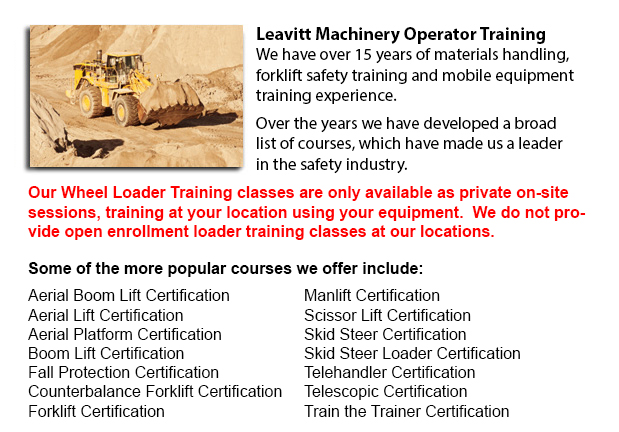
Forklifts are accessible in various load capacities and different units. Nearly all lift trucks in a standard warehouse situation have load capacities between one to five tons. Larger scale models are utilized for heavier loads, like for instance loading shipping containers, may have up to 50 tons lift capacity.
The operator can use a control in order to lower and raise the forks, that are also referred to as "forks or tines." The operator can likewise tilt the mast to be able to compensate for a heavy load's tendency to tilt the tines downward to the ground. Tilt provides an ability to function on uneven surface also. There are yearly competitions intended for skillful forklift operators to compete in timed challenges as well as obstacle courses at local lift truck rodeo events.
General utilization
Lift trucks are safety rated for loads at a specific maximum weight and a specified forward center of gravity. This essential info is provided by the manufacturer and positioned on a nameplate. It is vital loads do not go over these details. It is illegal in a lot of jurisdictions to interfere with or remove the nameplate without getting permission from the lift truck manufacturer.
Most lift trucks have rear-wheel steering in order to enhance maneuverability within tight cornering situations and confined areas. This particular kind of steering differs from a drivers' initial experience along with other motor vehicles. For the reason that there is no caster action while steering, it is no required to apply steering force in order to maintain a continuous rate of turn.
Instability is one more unique characteristic of lift truck utilization. A constantly varying centre of gravity occurs with every movement of the load amid the forklift and the load and they must be considered a unit during use. A lift truck with a raised load has centrifugal and gravitational forces which may converge to result in a disastrous tipping mishap. So as to avoid this from happening, a forklift should never negotiate a turn at speed with its load raised.
Forklifts are carefully made with a load limit intended for the blades. This limit is lowered with undercutting of the load, which means the load does not butt against the fork "L," and also decreases with tine elevation. Generally, a loading plate to consult for loading reference is positioned on the lift truck. It is dangerous to make use of a forklift as a personnel lift without first fitting it with certain safety devices like for instance a "cherry picker" or "cage."
Lift truck utilize in warehouse and distribution centers
Essential for every distribution center or warehouse, the lift truck has to have a safe setting in which to accommodate their efficient and safe movement. With Drive-In/Drive-Thru Racking, a lift truck must travel inside a storage bay which is several pallet positions deep to set down or obtain a pallet. Operators are normally guided into the bay through rails on the floor and the pallet is located on cantilevered arms or rails. These tight manoeuvres need skilled operators in order to complete the job efficiently and safely. As each pallet needs the truck to go into the storage structure, damage done here is more frequent than with different types of storage. When designing a drive-in system, considering the size of the tine truck, along with overall width and mast width, must be well thought out to be sure all aspects of an effective and safe storage facility.
-
Telehandler and Zoom Boom Certification in Vancouver
Telescopic handlers usually referred to as telehandlers for short, are an extremely popular piece of heavy construction equipment. They are usually used in the construction and agricultural industries. These equipments have maximum reaching capabilit... More -
Vancouver Telehandler Ticket
Vancouver Telehandler Ticket - A telescopic handler or telehandler is a machine which is commonly utilized in industrial and agricultural applications. It has the same look to a lift truck and even functions in a similar way, although, the telehandle... More -
Vancouver Crane Operator Classes
Vancouver Crane Operator Classes - For the operators and the supervisors, current and new, the crane operator training course is suitable for all. Course content includes relevant federal, provincial and state safety regulations. The first component... More -
Vancouver Crane Training School
Vancouver Crane Training School - The crane training school offers industry-relevant programs. Courses provide trainees with learning results that match existing industry demands. Our small class sizes combine hands-on experience and theory. Our qual... More -
Vancouver Aerial Boom Lift Training
Vancouver Aerial Boom Lift Training - Aerial Boom Lift Training is needed for any individual who supervises, operates or works in the vicinity of boom lifts. This particular type of aerial lift or aerial work platform is for lifting individuals, tool... More -
Narrow Aisle Forklift - Order Picker Training - Electric Pallet Jack - Electric Pallet Truck Certification in Vancouver
A pallet jack is a piece of equipment dedicated in the maneuvering of pallets of many dimensions and weights. They can be used as an attachment for forklifts, cranes and other variations of heavy machinery or be applied on their own. Pallet lifts are... More -
Vancouver Telehandler Operator Training
Vancouver Telehandler Operator Training - Telescopic handler Forklifts or telehandler forklifts are common industrial machines found in numerous construction industry environment. The telehandler is a helpful machine and makes for a valuable device t... More -
Vancouver Manlift Ticket
Vancouver Manlift Ticket - The Manlifts and Elevated Platforms course provides training on the regulations, rules and proper application of safe operating procedures and work practices involved in daily activities for individuals who work with this m... More

Forklift Certification Vancouver
TOLL FREE: 1-888-254-6157
51 Leeder Street
Coquitlam, British Columbia
forkliftcertificationvancouver.com/
Email Us
About Us



